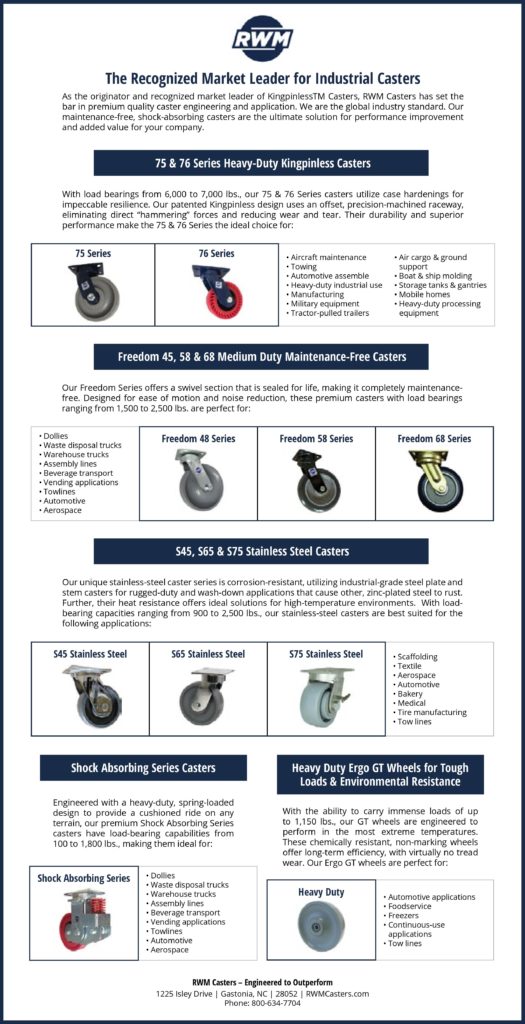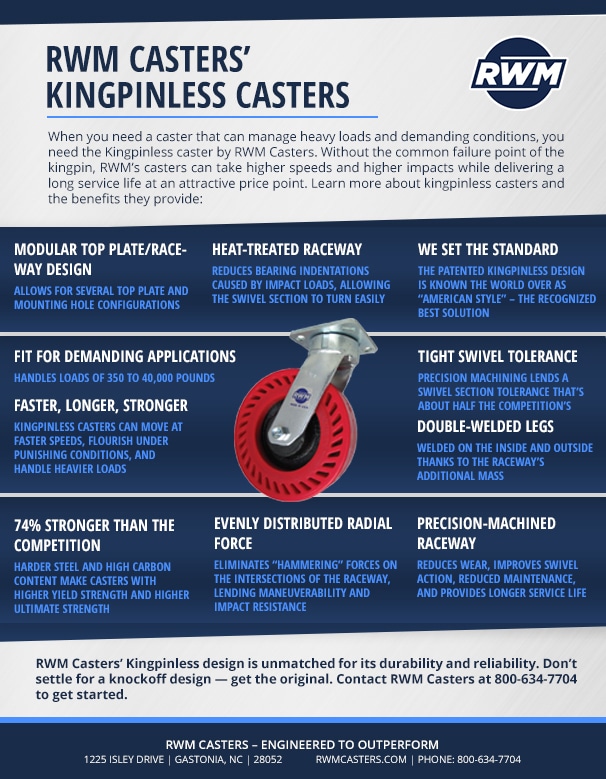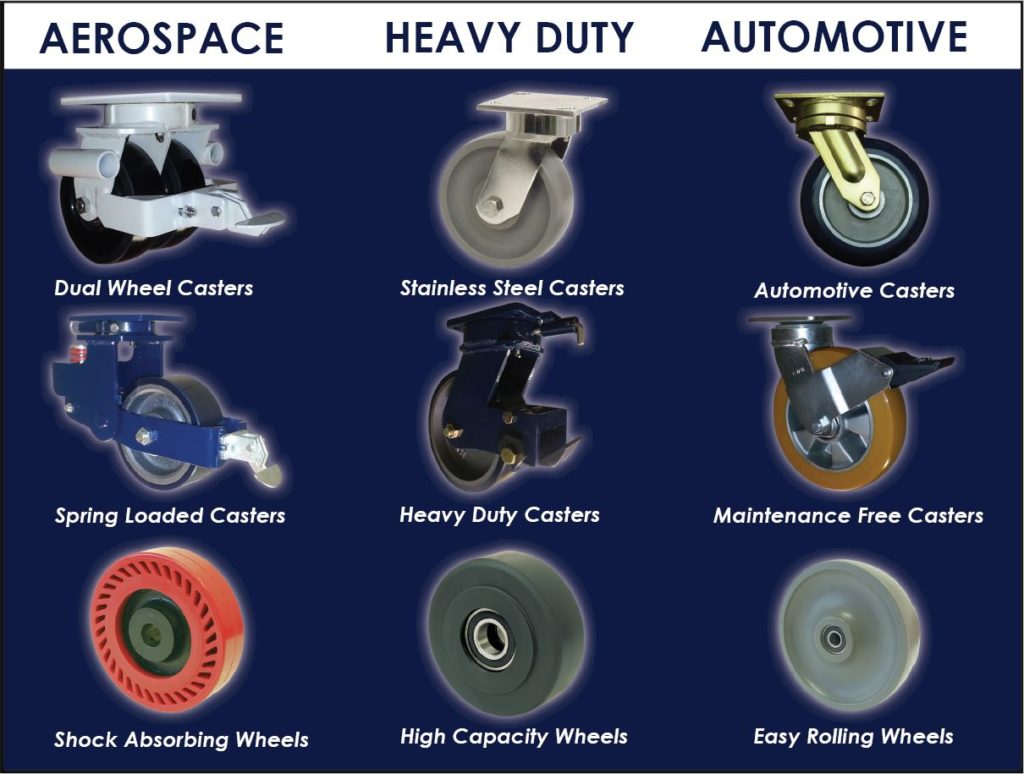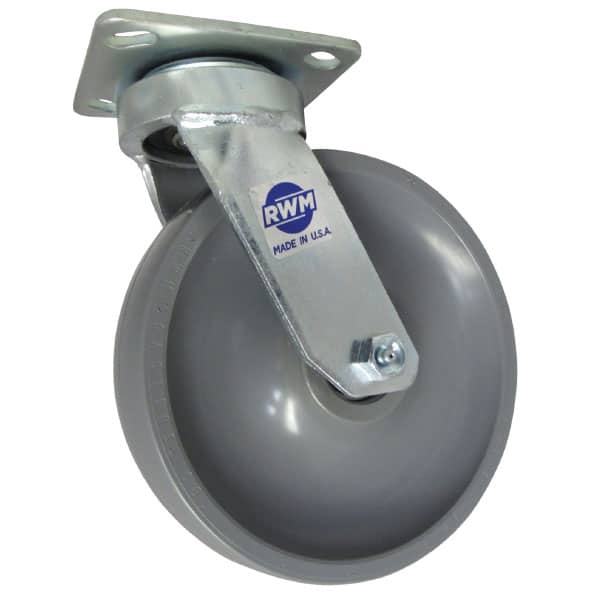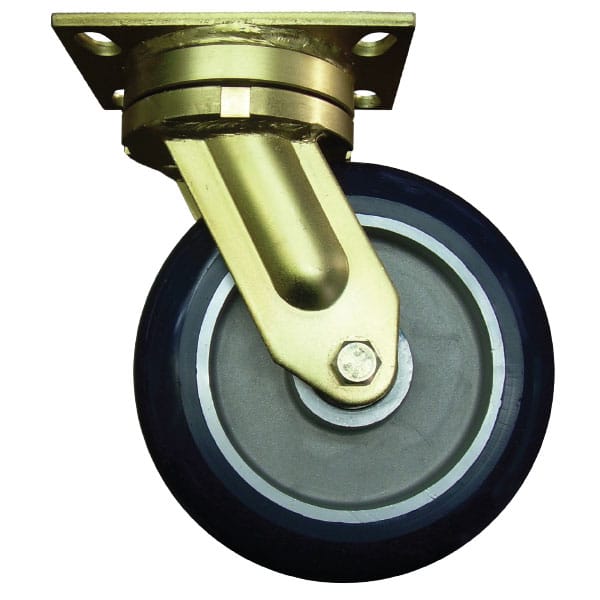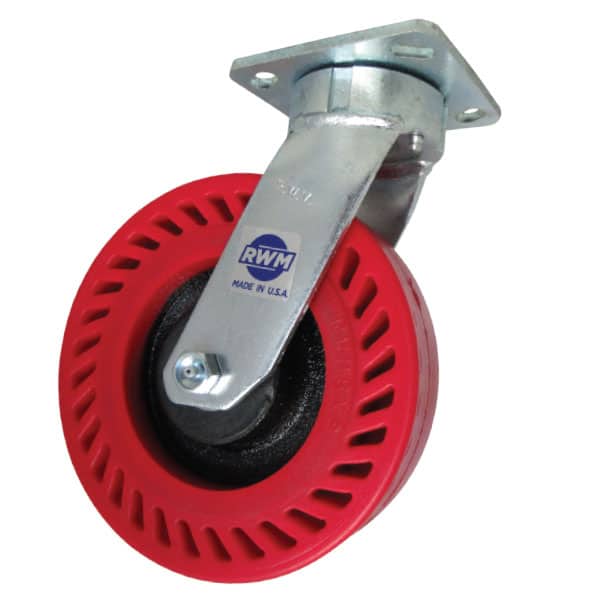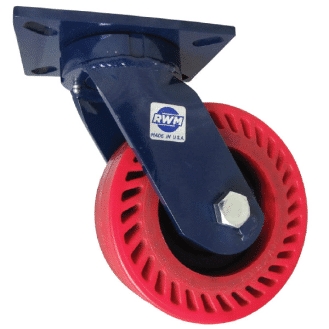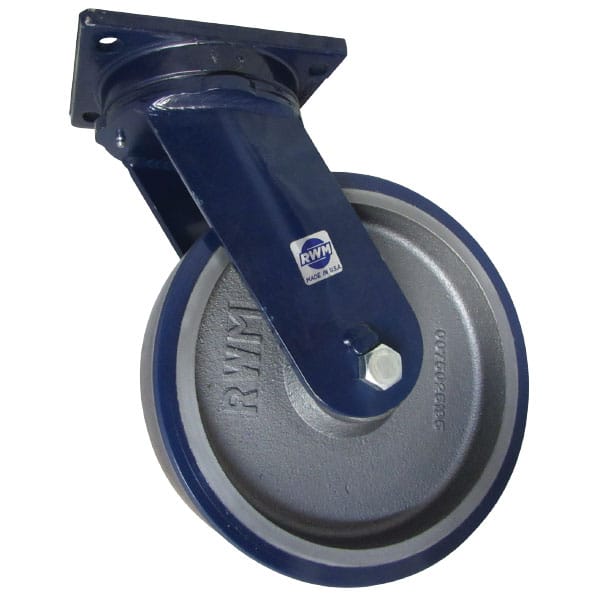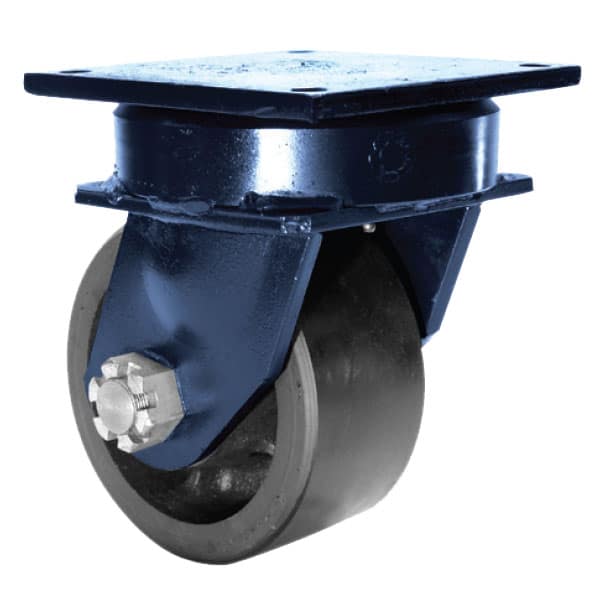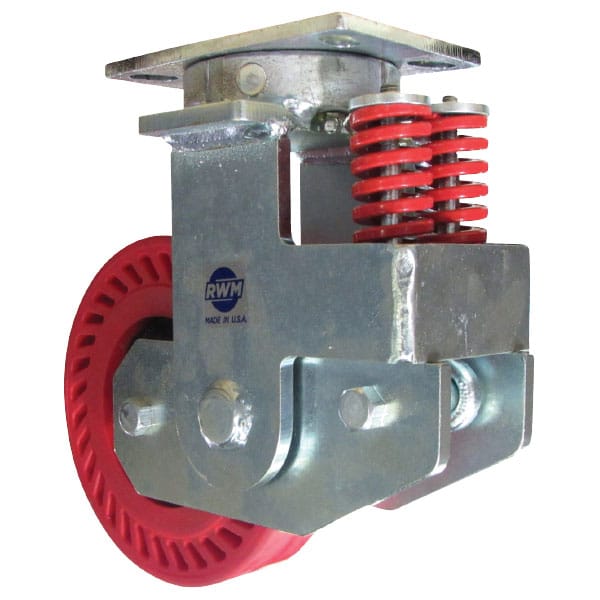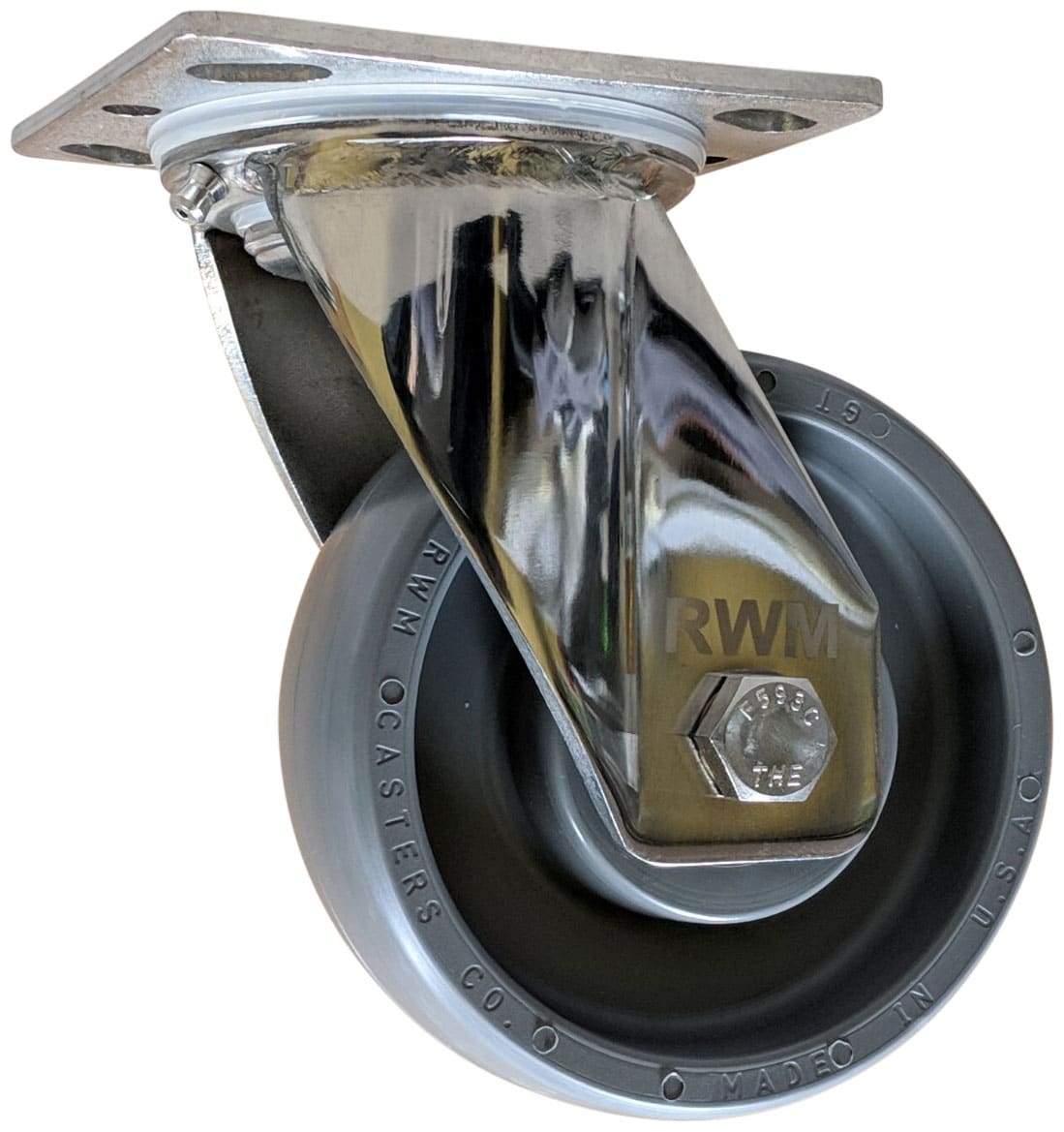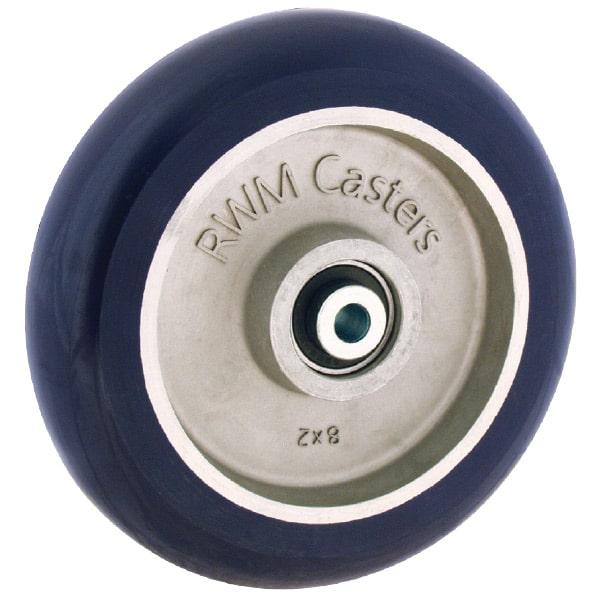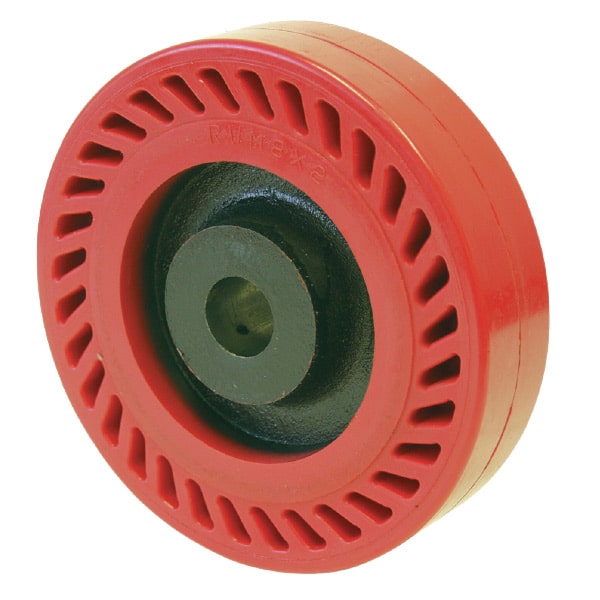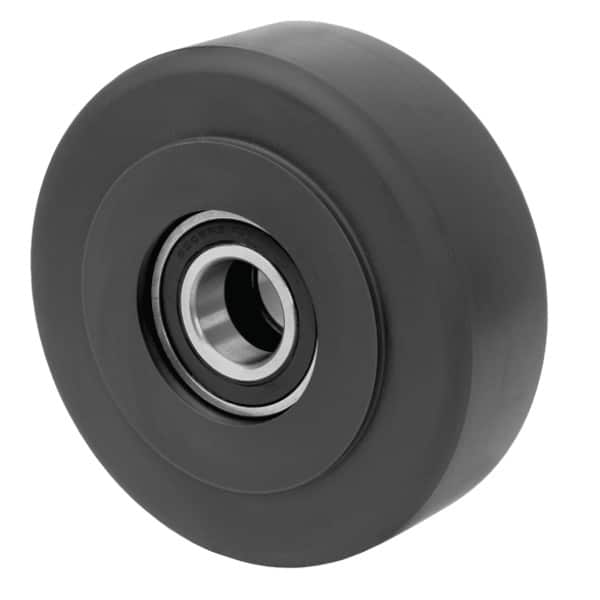While the Occupational Safety and Health Administration (OSHA) doesn’t regulate caster specifications, it does establish safety standards that impact their use. Ensuring that your company is compliant with OSHA guidelines can help prevent workplace injuries, improve functionality, and enhance productivity.
In this blog, the experts at RWM Casters—a leading domestic manufacturer of industrial casters since 1935—will explain how your business can meet OSHA standards with industrial casters by selecting the right equipment and implementing best practices.

OSHA Standards Related to Material Handling
Industrial casters impact material handling, which involves transporting, lifting, and maneuvering loads safely. Because material handling is significant to everyday operations, OSHA has several regulations that relate to the proper use of casters and wheels in industrial settings:
- 23(e)(1)(iv): OSHA requires that wheels or casters under load must support their proportional share of four times the maximum intended load plus the weight of the unit itself. This ensures that casters can handle unexpected stresses and prevent failures that could lead to workplace injuries.
- 23(e)(1)(vii): When using mobile ladder stands or platforms with casters, they must have a system to impede horizontal movement when in use. This prevents accidental rolling, reducing the risk of falls and instability.
- 176(a): Workspaces must have sufficient clearance for mechanical handling equipment, including carts and platforms with casters. Aisles and passageways should remain clear, well-marked, and in good repair to prevent tripping hazards. Casters should not obstruct these spaces or create unsafe working conditions.
- Noise and Vibration Reduction: OSHA’s noise regulations emphasize reducing workplace noise levels to prevent hearing damage (OSHA 3953). Industrial casters with shock-absorbing and noise-reducing materials can help mitigate workplace noise. Additionally, reducing vibrations from unsmooth rolling can lower the risk of repetitive strain injuries and conditions such as hand-arm vibration syndrome (HAVS).
Choosing OSHA-Compliant Industrial Casters
While OSHA doesn’t set product-specific standards for casters, businesses should still choose casters that are tested to meet or exceed ANSI ICWM standards. These standards define safety and performance testing, including load capacity, durability, and impact resistance.
By selecting the right industrial casters, you can help create a safer, more efficient work environment. As a result, you’ll be closer to remaining OSHA-compliant while prioritizing worker safety.
Improving Ergonomics with Industrial Casters
When it comes to material handling, ergonomics is a key factor for safety and productivity.
Smooth-rolling casters reduce the need to push or pull—making it far easier to move heavy carts and equipment with less strain. Less strain can prevent overexertion injuries (which are arguably the most common warehouse workplace injuries) and allow employees to be more efficient.
Common Hazards Addressed by Casters
Seemingly small industrial caster can greatly impact work. In fact, the right casters can circumvent hazards like:
- Push-Pull Loads: As mentioned above, ergonomic casters make moving objects easier.
- Durability and Load Capacity: Subpar casters may fail under heavy loads, and that can lead to tipping or dropping materials. High-quality casters can prevent common equipment failures.
- Locking Mechanisms for Stability: Casters that have swivel locks and braking systems help prevent unintended movement. This can reduce the risk of falls and injuries, especially with mobile work platforms.
Tips for Assuring Ongoing Compliance
To maintain OSHA compliance and workplace safety, every industrial business should follow these best practices:
- Inspect equipment regularly to confirm casters are in good condition.
- Keep aisles and passageways clear of obstructions to prevent accidents.
- Ensure casters are locked when equipment is stationary.
- Select casters rated for the appropriate load size.
- Choose ergonomic, low-resistance industrial casters.
Depend on RWM Casters for Workplace Safety Compliance
You don’t have to navigate workplace safety and industrial casters by yourself. Fueled by our mission to fully satisfy our worldwide customers’ needs, RWM is eager to help your business thrive. We offer a wide range of products that can keep you OSHA-compliant, safe, and effective.
Learn more about RWM and our superior products by contacting us online.

